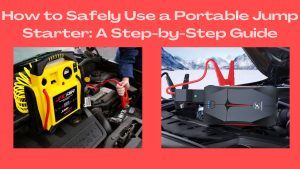Hitting a road trip for the first time may not be as easy as you think. Checking on your safety should be the primary thing to do. Thousands of lives are lost on the road daily due to alcoholism and the use of drugs, overspeeding, and poor road conditions, among other violations of traffic rules. Off-road safety is a concern not only to teen drivers but also to experienced adult drivers. Whether new on the road or a professional driver, you need to understand off-road driving safety tips.
Safety should come first. Ensure your safety while keeping the road safe for other users. We will share more safety tips to help you stay safe while adhering to road traffic rules. The article will share safety tips for summer, winter, and defensive driving.
Off-Road Driving Safety Tips for Summer ATV Drivers
The summer season may not be a good month for most teen drivers. Most drivers may fail to wear the proper gear while driving their ATVs. Here are tips to help you keep safe.
Drive On The Right Trail
Some states may allow driving ATVs on paved roads. However, it is unsafe to go on them. You risk bumping into a car while driving on these sites. ATVs are suitable for off-road use. Driving on a paved road can make you collide with another vehicle easily.
Always Drive In The Right Gear
It doesn’t matter the season. Safety first! Whether it is in summer or winter, dress up for safety. Most drivers forget about their safety in hot weather. When on your ATV, ensure you are in full safety gear. Put on a department of transport compliant helmet, gloves, long pants, over-the-ankle boots, and goggles.
Drive ATV on The Correct Trials
Apart from maintaining a good speed, ensure you drive on the right trail. Some people may have a big yard and get tempted to ride on their ATV. Never hang your ATV in areas that are not for your vehicle. Maintaining a good speed and driving on the right trail will keep you safe.
Drive ATV with The Recommended Capacity
It is always fun to drive on an ATV with your loved ones during summer. However, it is not safe if your ATV is not for carrying more than one person. Exceeding the limits can quickly flip over your vehicle and cause an accident.
Off-road Driving Safety Tips You Should Know
Be Focused
When on the ride, stay focused and avoid distracted driving. Put your tablet or cellphone away and concentrate on the trail. Observe traffic signs and keep your eyes on the road. Texting, calling, and distracting your attention with an electronic device can make you crash your motor vehicle.
Avoid Conversation While Driving
You better drive solo! Having a conversation with a friend while driving may not be risky. It isn’t easy to focus while maintaining a conversation. It is safer to go alone than to carry a friend on the ride. If you decide to travel with a friend, you better ask them to maintain silence and keep their eyes on the trail instead of disturbing you with a lengthy conversation. They should support by giving direction and ensuring a safe drive.
Check On Your Emotions and Moods While Driving
While driving, check on your emotions and moods. Time for driving is not for settling disputes or eliciting negative emotions. Such can easily trigger speed and cause an accident. If you discover bad attitudes, take some time to call friends to listen to your favorite music before taking a drive. Though some drivers may be annoying, never pick a quarrel with them. Just focus on your ride.

Image Source: http://www.4x4driving.co.uk
Avoid Following a Friend While Driving
It is dangerous to follow another car to the same destination. It can disrupt your attention and cause accidents. Such a risky behavior can promote high-speed driving, ignoring traffic lights and signs, and wrongly lane shifting. The best thing to do while driving with a friend is to target the destination. You will be able to go at your safe speed and arrive safely at the destination.
Drive at The Right Speed
It is against the law to over speed. Racing at high speed can cause accidents and injuries. When you make speedy drives, you may be unable to stop your vehicle on time. It is easy to stop a car and control a rash at the right speed. Speed limits vary from one state to another. Check and ensure you are maintaining the correct speed limit according to your state rules.
Take a Defensive Driving Course
Reading driving signs and safety tips may not be enough, especially for the new drivers. If safety is your priority, take a defensive driving course. Train and get relevant skills to help make a quick decision when driving in bad weather or in situations that need a fast response to prevent crushing. You learn the basics of defensive riding and handle road rage.
Observe Traffic Light
While driving, observe the traffic lights. Always stop at the red light. Some riders may be in a hurry and fail to notice the light change, which results in accidents. Others may not concentrate because of the destruction. Whether you are late or hurrying, stop at the red light to avoid causing accidents.
Make Use of The Driving Signals
Never assume that other road users are aware of your next move. Make good use of the riding signs and indicate when making a change. Turn the signal on to notify your intentions. Some ridders may even make room for you when intending to make a turn or change a lane.
Turn The Headlights On
Never take chances when riding in rain or snow. Turn on the headlights to increase visibility and keep safe. Headlights are essential when visibility is low, particularly after sunrise and before sunset. However, it is unnecessary to turn them on at night unless you are riding in bad weather.
Plan Your Journey
Before your start driving, take time to plan for it. Determine the weather conditions of the place and equip yourself with the necessary facilities you need. Use the map for the direction of where you are going. When making long-distance driving, make stops along the journey for resting and, if possible, take some refreshment. It will help you prevent drowsiness while driving that can cause an accident.
Defensive Off-road Driving Safety Tips for Reducing Accidents Risks
Always Think About Safety First While Driving
You should avoid inattentive and inactive driving tendencies that will enable you to deal with bad driving habits. Ensure plenty of space between your car and that in front of you. Ensure you have tied a seatbelt and locked the door to prevent getting thrown out in case of a crash.
Understand Your Surrounding
For every 20 to 30 seconds, check the mirror to confirm the conditions ahead of you. Keep your eyes moving and check for any car showing aggressive driving. Pullover or slow down to avoid such vehicles. Also, pay attention to other road users such as bicyclists, pedestrians, and pets along the trail.
Use 3-4 Second Rule
When driving, leave about 3 to 4 seconds to the vehicle in front of you. It gives you humble time to apply break in case of any emergency safely. When driving in bad weather conditions, increase this time. Also, add an extra second when following a large truck or motorcycle.
Maintain Low Speed
The speed limit applies to every condition. You should always ensure you are driving at the correct speed, whether on a clear trail or not. Higher driving speeds make controlling the vehicle difficult when emergencies such as busting of tires or any other accident happen. Drive at the right speed for every condition to avoid causing accidents.
Have an Escape Space
The best way to ensure safety while driving is always to have an escape route to avoid potential danger. Have an escape path to follow in case your primary path is blocked.
Effective Management of Risks
When you encounter multiple risks on the road, learn to deal with them one at a time. Avoid trying to deal with too many chances at a time.

Image Source: http://lostandcurious.com/
The 5 Smith Rules for Offshore Driving
There are three essential things addressed in the smith rule about safe driving. The rule advocates for a safe space to maneuver your vehicle, visibility to detect danger, and time to react to a volatile and complex environment. Using the five rules, you can use the following tips to keep safe while driving offroad;
Aiming in Steering
Our eyes naturally don’t work according to our walking speed. It isn’t easy to align your eyes together with driving speed. To drive safely, you need to look 15 seconds ahead of your drive. Fifteen seconds of eye lead time gives you an advanced warning and contributes to the additional margins of safety. For efficient and safe driving, use the eye-lead time driving technique.
Getting the Bigger Picture
Scan ahead while driving and never forget looking the sides and rear. Keep on confirming in your mirror after every 5 to 8 seconds. Never lose your attention over insignificant objects. Maintain enough distance behind other vehicles to get good visibility. Be alert to any information that can help you make an informed decision.
Keep Moving Your Eyes
Do not stick to one object for long. Always move your eyes and scan all the intersections before entering them. Move your eyes every 2 seconds to stimulate your brain. An alert mind will protect your brain from fatigue and increase concentration.
Leave a safe space between you and another vehicle. Ensure you are surrounding yourself with space. Drive on the right lane and ensure a safe distance every time you are on trial. If it is challenging to keep a safe distance, provide at least one side is open.
Be More Visible
Let all people using the road see you. Send a warning signal as soon as you suspect any emergency. Use all the available contact devices on the vehicle to communicate to the road users.
Off-road Driving Safety Tips For The Winter Season
Winter seasons create sorts of driving challenges ranging from snow, slush, and freezing rain that create a risky environment. To drive safely during the winter season, do the following:
Always buckle up. Basic road safety encourages tightening of the seat belts when driving as a defense against car crush.
Be extra careful when driving in areas that ice up rapidly, mainly in intersections, bridges, overpasses, and shaded areas.
Check weather reports regularly before driving to some places. You can get the weather condition update online or over the TV and prepare for bad weather. Stay at home when you don’t need to be on the road.
Carry your emergency kit in your car. Ensure you have a blanket, jumper cables, and first aid kit for safety. counter check to ensure you have all the items for your car emergency kit.
Ensure you charge your cell phone and your car has a full tank of gas.
Conclusion
Road safety is not a new concept to many. Whether further or experienced drivers. Safety comes first. You need to have off-road driving tips to help you keep safe and avoid accidents. Whether operating in summer or winter, ensure you adhere to safety measures. Be focused and keep going at a safe speed while adhering to the road traffic rules. Maintaining a safe space and keeping cool on the road can help you avoid risky behavior while driving.
More Related Articles:






